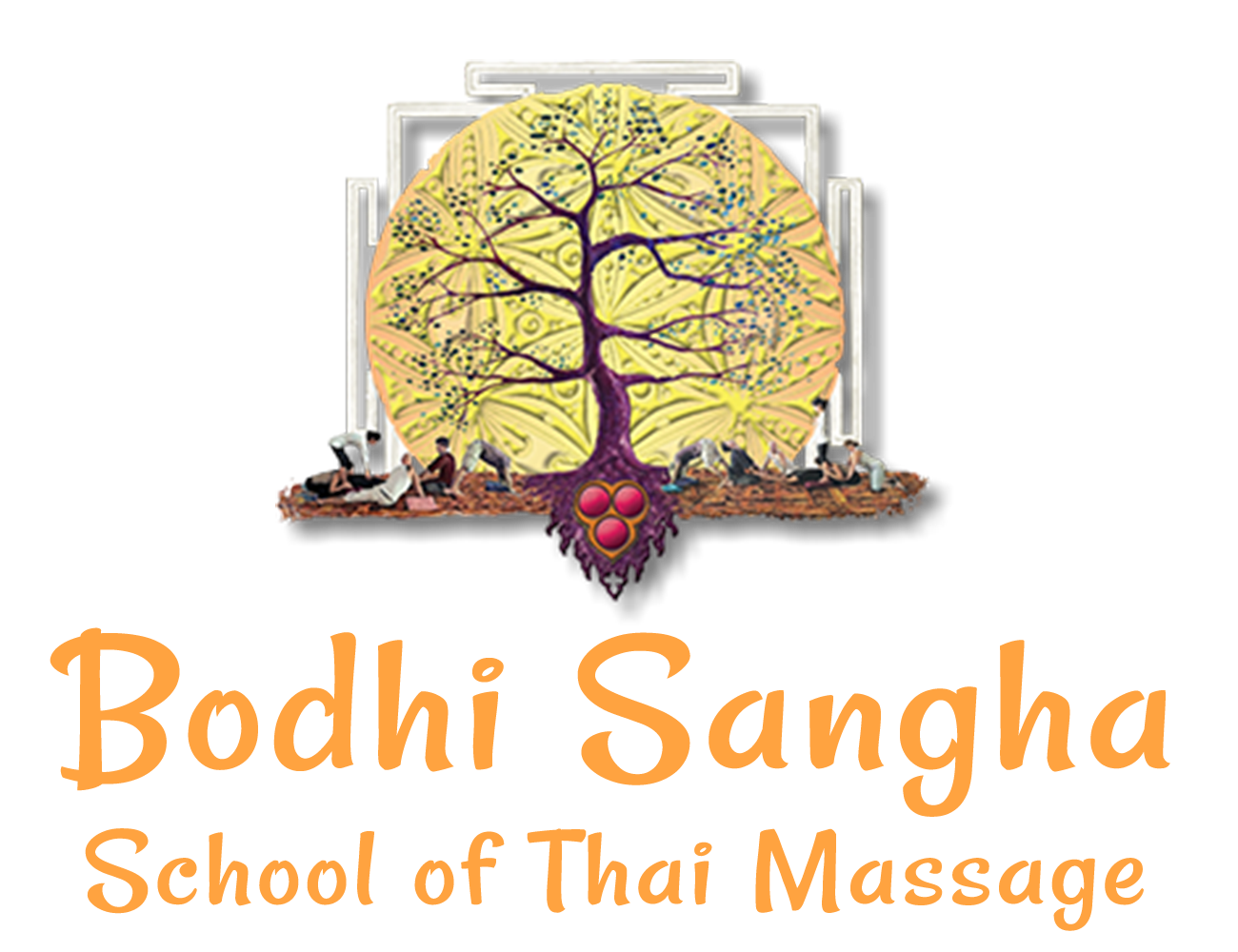The hermits massage from Thailand is a rare art that allows the Thai Yogi to take care of themselves. It is believed that Reusi Dat Ton came first then Thai Massage.
We may never know what, if any Ancient texts on Reusi Dat Ton may have existed and were lost when the invading Burmese armies destroyed the old Thai capital of Ayutthaya in 1767. Today, the closest thing to an original source text on Reusi Dat Ton is an 1838 manuscript commissioned by Rama III entitled The Book of Eighty Rishis Performing Posture Exercises to Cure Various Ailments. Like other manuscripts of the time, this text was printed on accordion like folded black paper, known in Thai as “Khoi.” This text, popularly known as the Samut Thai Kao features line drawings of the 80 Wat Po Reusi Dat Ton statues along with their accompanying poems. In the introduction, it states that Reusi Dat Ton is a “…system of posture exercises invented by experts to cure ailments and make them vanish away.” (Griswold, 321) This text is housed in the National Library in Bangkok. There are also other editions of this text housed in museums and private collections as well.
The Samut Thai Kao seems to follow an old tradition also found in ancient Indian, Nepali and Tibetan Yoga manuscripts that list 80 to 84 different techniques. The Samut Thai Kao is, however, only a partial collection of all the various Reusi Dat Ton techniques. A 1958 Wat Po publication, The Book of Medicine includes a section on Reusi Dat Ton. While it contains verses based upon the poems at Wat Po, many of the accompanying illustrations depict completely different techniques.
In the Southern Thai town of Songkhla, on the temple grounds of Wat Machimawat is a pavilion known as the “Sala Reusi Dat Ton.” High up on the inside walls of this pavilion is a mural which depicts 40 of the Reusi Dat Ton techniques along with the accompanying poems from the Samut Thai Kao.
There is a special section devoted to Thai Medical history at the Mahidol University’s Siriraj Medical Museum on the Bangkok Noi campus in Bangkok. There one can view a Reusi Dat Ton display featuring small painted wood Reusi figures that depict over 60 different Reusi Dat Ton techniques. This display is based upon the 1958 Wat Po text The Book of Medicine.
In Nonthaburi, on the Ministry of Public Health Campus at the Institute of Thai Traditional Medicine, there is the Thai Traditional Medicine Museum. Inside the museum is a small display of Reusi Dat Ton statues. Outside the museum is an artificial mountain upon which have been placed various Reusi statues demonstrating Reusi Dat Ton techniques. Within the mountain is the “Hermit’s Cave” which houses numerous small Reusi statues also depicting Reusi Dat Ton techniques. These statues depict techniques from both the Samut Thai Kao and The Book of Medicine.
On the outskirts of Bangkok, in the town of Samut Prakan, is the cultural park, the Ancient City or “Muang Boran.” One of the many attractions is a “Sala of 80 Yogi” which features 80 life- sized Reusi statues illustrating various Reusi Dat Ton techniques. There are even depictions ofReusi Dat Ton techniques not found in either of the two Wat Po texts. While most of these statues are fairly accurate depictions of Reusi Dat Ton techniques, a few actually show Indian Hatha Yoga techniques, which are not part of the Reusi Dat Ton system.Students of Reusi Dat Ton should bear in mind that while some of the Reusi Dat Don statues, drawings, paintings and poems are beautiful works of art, they were created by artists who were not necessarily all practitioners of Reusi Dat Ton. In fact, a number of images do not illustrate the actual techniques entirely accurately. Even in 1836, there was some uncertainty as to which technique produced which effect and some poems were used for more than one technique. Therefore, students of Reusi Dat Ton should also seek out living teachers who have learned from authentic sources such as actual Reusis, who can teach the techniques in their authentic form.
There are also additional Reusi Dat Ton techniques practiced by Reusis today, which are not found in any text, nor depicted in any sculpture or paintings. These are also traditional techniques, which have been passed down from teacher to student over the centuries. There are close to 300 different exercises and poses, including variations, in the entire Reusi Dat Ton system.
David Wells has collected as much text and photos of this art as he could in the last 20 years. He has taught Ariela the self care and yoga techniques. If you would like to learn more about Reusi Dat Ton, contact her.



